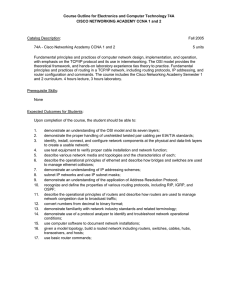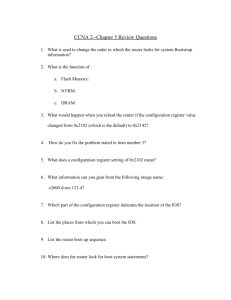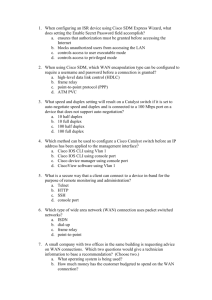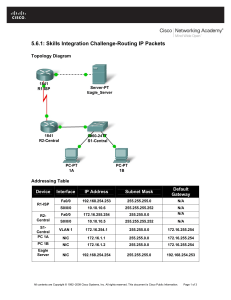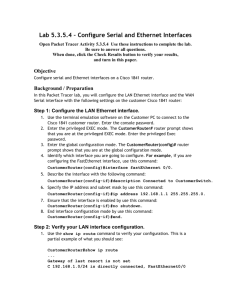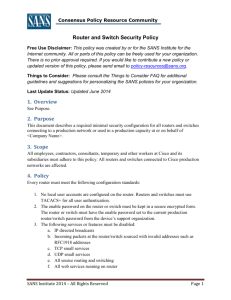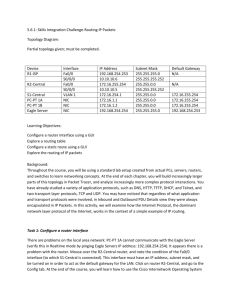CCNA 2—Router and Routing Basics
advertisement
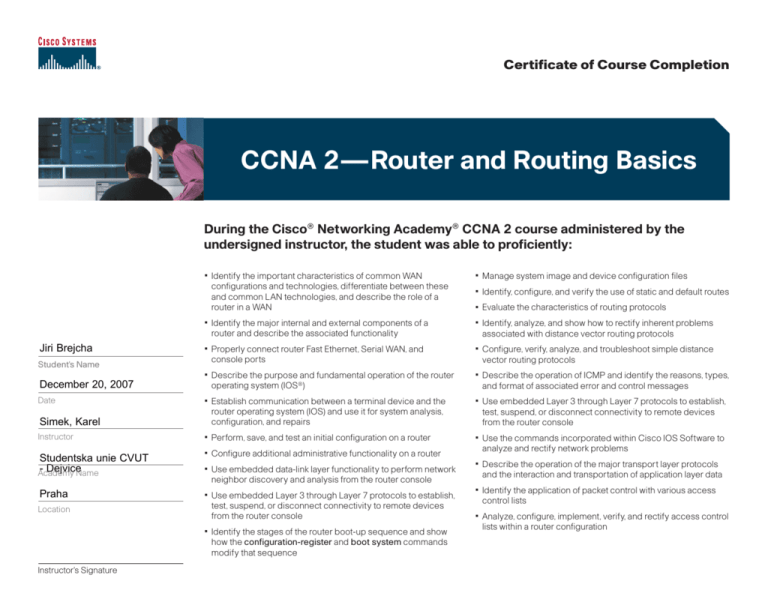
Certificate of Course Completion CCNA 2—Router and Routing Basics During the Cisco® Networking Academy® CCNA 2 course administered by the undersigned instructor, the student was able to proficiently: • Identify the important characteristics of common WAN • Identify the major internal and external components of a • Manage system image and device configuration files • Identify, configure, and verify the use of static and default routes • Evaluate the characteristics of routing protocols • Identify, analyze, and show how to rectify inherent problems Jiri Brejcha • Properly connect router Fast Ethernet, Serial WAN, and • Configure, verify, analyze, and troubleshoot simple distance Student's Name • Describe the purpose and fundamental operation of the router • • Establish communication between a terminal device and the • Use embedded Layer 3 through Layer 7 protocols to establish, • Perform, save, and test an initial configuration on a router • Configure additional administrative functionality on a router • Use embedded data-link layer functionality to perform network • Use the commands incorporated within Cisco IOS Software to • Use embedded Layer 3 through Layer 7 protocols to establish, • Identify the application of packet control with various access configurations and technologies, differentiate between these and common LAN technologies, and describe the role of a router in a WAN router and describe the associated functionality December 20, 2007 Date Simek, Karel Instructor Studentska unie CVUT - Dejvice Academy Name Praha Location console ports operating system (IOS®) router operating system (IOS) and use it for system analysis, configuration, and repairs neighbor discovery and analysis from the router console test, suspend, or disconnect connectivity to remote devices from the router console • Identify the stages of the router boot-up sequence and show how the configuration-register and boot system commands modify that sequence Instructor's Signature associated with distance vector routing protocols vector routing protocols Describe the operation of ICMP and identify the reasons, types, and format of associated error and control messages test, suspend, or disconnect connectivity to remote devices from the router console analyze and rectify network problems • Describe the operation of the major transport layer protocols and the interaction and transportation of application layer data control lists • Analyze, configure, implement, verify, and rectify access control lists within a router configuration During the course, you have developed a solid foundation in the basics of networking, demonstrating knowledge of important concepts and skills, including the OSI model, Ethernet networks running TCP/IP, IP addressing, and structured cabling skills. Information technology skills are in high demand given the explosive growth of the Internet as a practical business tool. Technological literacy is more important today than ever before, and Cisco is proud to provide you with the knowledge and skills to design, build, and maintain computer networks. Wishing you continued success in CCNA 3! Sincerely, John Chambers President and CEO Cisco Systems, Inc. a
